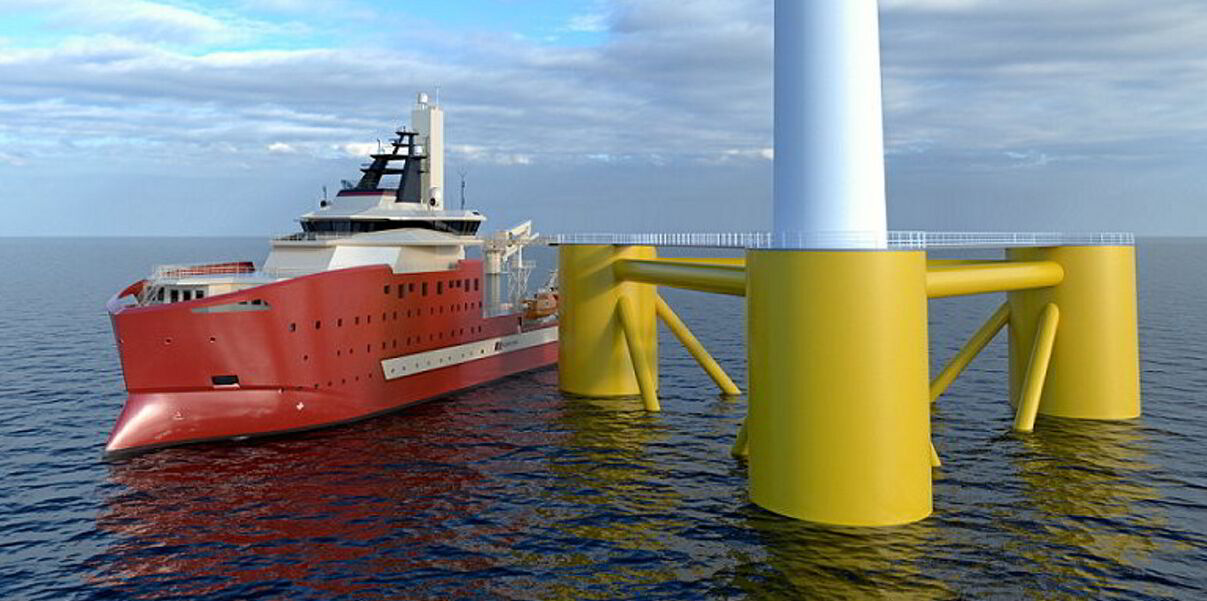Scottish shipowner North Star is teaming up with shipbuilder Vard and technology companies to develop a new ship to work on floating offshore wind farms.
The company said the “major industry collaboration” aims to solve one of floating wind’s most pressing challenges: the delivery of bespoke service operation vessels.
North Star will lead the design process, with its Fincantieri-owned partner Vard.
AI software firm MO4, floating wind company Principle Power, offshore equipment maker SMST and propulsion company Voith Group make up the rest of the team.
A memorandum of understanding has been signed to help fast-track design and testing.
The new ship type will be aimed at big projects such as the 17GW awarded in the ScotWind leasing round in the UK.
North Star said: “As offshore wind moves into deeper waters with floating wind turbines located far from shore, the sector faces significant logistical and operational challenges that must be addressed efficiently and cost-effectively.”
“While the industry has demonstrated the ability to safely complete transfers from traditional SOVs to floating wind platforms, there is room for improvement in transfers where both the vessel and platform are dynamic and in motion,” it added.
This year, North Star has secured up to £425m ($543m) in new financing to realise its ambition to have 40 offshore wind farm vessels by 2040.
The group has UK bases in Aberdeen, Lowestoft and Newcastle, and in Hamburg, operating 41 multipurpose offshore ships in the North Sea.
Looking for long-term charters
In addition, it has three newbuilding SOVs working at the Dogger Bank wind farm off north-east England.
Last month, it contracted the second of two SOVs at Cochin Shipyard in India.
There are also two commissioning service operation vessels and another SOV on order, all booked at Vard yards.
North Star aims to charter any new ships to floating wind farm companies on long-term deals.
Its renewables and innovations director, Andrew Duncan, said: “Floating offshore wind presents both challenges and opportunities, and through this collaboration, we can innovate and design a solution specifically tailored for GW-scale projects.”
“Our goal is to create an innovative, best-in-class ship design that supports the rapid expansion of floating wind technology,” he added.




